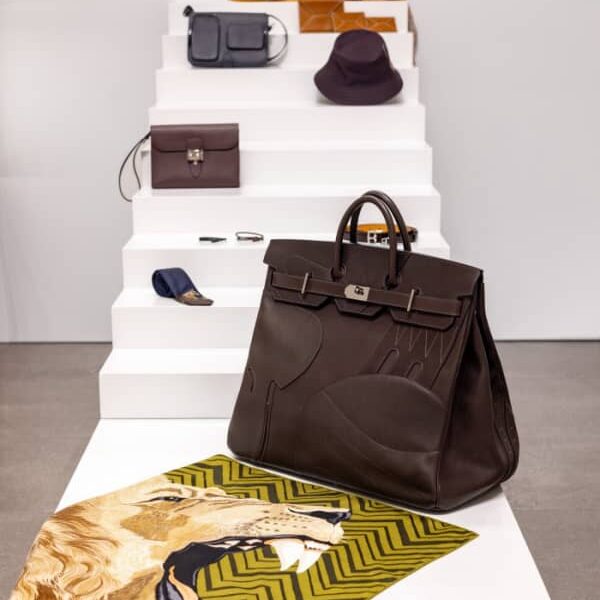BNP Paribas has upgraded the stock rating of Hermès from Neutral to Outperform

According to financial information platform Investing.com, BNP Paribas has upgraded the stock rating of Hermès from Neutral to Outperform, maintaining the target price at €2,340.
BNP Paribas emphasized that Hermès’ current trading price is about 20% lower than the peak of €2,410.5 reached in March 2024. The current valuation of Hermès stock is about 41 times the forecasted price-to-earnings ratio for one year, which is approximately 15% higher than the pre-pandemic average of 35 times. This premium is considered reasonable due to the increase in Hermès’ free cash flow, with its operating margin before interest and taxes up by 5 percentage points from pre-pandemic levels to 40%.
BNP Paribas analysts also pointed out that the current target price suggests there is still a 20% upside potential. The upgrade to “Outperform” reflects a change in perspective on the stock’s valuation, indicating that Hermès has become attractive again.
Despite the complex economic environment impacting the luxury goods sector, which had previously thrived during the pandemic, Hermès has shown greater resilience compared to its competitors. This resilience was also reflected in the recently released half-year report.
In the first half of 2024, LVMH’s sales dropped by 1% year-on-year, with organic growth of 2%, a significant slowdown compared to a 15% increase in sales in the first half of 2023. Moreover, even in the first half of 2022, when the Chinese market was most severely affected by the pandemic, LVMH saw a 28% increase in sales. Revenue for the fashion and leather goods segment, a pillar of total revenue, decreased by 2% year-on-year to €20.77 billion. This segment includes a range of products from handbags to haute couture from luxury brands such as Louis Vuitton and Dior.
LVMH’s Chief Financial Officer, Jean-Jacques Guiony, stated in the earnings report that higher-priced ready-to-wear items performed better, while growth in handbags and entry-level products was less than ideal. The mass appeal of luxury goods has been key to LVMH’s leadership in the industry, but it also becomes a constraint when the market cools.
As middle-class consumers become more conservative and purchasing desire declines, high-net-worth customers struggle to fill the gap.
Richemont Groups’ financial report for the full 2024 fiscal year and the fourth quarter showed that, as of March 31, the group’s sales grew by 3% to €20.6 billion at constant exchange rates, but there was a decline in revenue in the fourth quarter due to a slowdown in the global luxury market, especially the weak performance in the Asian market.
For the first quarter of the 2025 fiscal year, ending June 30, 2024, Richemont’s sales had yet to show significant improvement, with a 1% year-on-year increase at constant exchange rates and a 1% decline at actual exchange rates. Regionally, sales increased in all regions except the Asia-Pacific market.
In contrast, Hermès, with a single brand and smaller scale than the large groups mentioned above, released a financial report showing double-digit growth in all regions.
In the first half of 2024, Hermès’ consolidated revenue reached €7.5 billion, an increase of 12% year-on-year. Among them, the leather goods and saddlery department, led by handbags, saw the highest increase, at 19%. This growth was driven by expanded production capacity and sustained consumer demand.
Hermès’ Chief Financial Officer and Executive Vice President, Eric du Halgouët, mentioned during the earnings report that the full-year forecast for the leather goods and saddlery segment remains at 15% to 16%, with price impact ranging from 6% to 8% and capacity impact around 6%.
Additionally, he noted that although Chinese consumers were affected by the stock and real estate markets, the decline in Hermès’ market share in China during the first half of the year was minimal and almost negligible. The main factors were inventory shortages and currency exchange rate impacts.
Hermès’ unique position lies in the fact that the brand’s logo is not prominently displayed, but customers need to establish a stable relationship with sales associates to acquire specific leather goods, enhancing their scarcity. Hermès executives also mentioned in the earnings report that Chinese consumers may not necessarily want products with visible logos.
According to analysis by Chinese e-commerce platform Taobao, this unique shopping characteristic has enabled Hermès to maintain steady growth despite the cooling of China’s luxury market.
In early 2024, Hermès opened a new store in Wuxi, China, and the renovated Beijing SKP store reopened mid-year. Furthermore, the brand recently posted job openings for a new store in Beijing’s Taikoo Li Sanlitun.
Compared to its peers, Hermès’ expansion pace is not aggressive, yet it still creates room for growth. Instead of striving to generate buzz through various runway events, Hermès remains a brand in the luxury industry that is particularly skilled at maint





